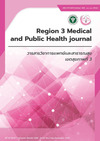การศึกษาเปรียบเทียบภาวะความดันเลือดต่ำหลังการระงับความรู้สึกด้วยวิธีฉีดยาชาเข้าช่องน้ำไขสันหลังเมื่อลดขนาดยาชา และเสริมฤทธิ์ด้วยเฟนตานิล (Fentanyl) เทียบกับขนาดยาชาปกติในผู้ป่วยสูงอายุที่เข้ารับการผ่าตัดยึดตรึงกระดูกข้อสะโพกหักด้วยแท่งเหล็ก ในโรงพยาบาลอุทัยธานี
คำสำคัญ:
การเตรียมเลือดสำหรับการผ่าตัด, การผ่าตัดคลอดทางหน้าท้อง, ดัชนีความคุ้มค่าการใช้เลือดบทคัดย่อ
วัตถุประสงค์: เพื่อศึกษาอัตราการเกิดภาวะความดันเลือดต่ำหลังการระงับความรู้สึกด้วยวิธีฉีดยาชาเข้าช่องน้ำไขสันหลังเมื่อลดขนาดยาชาและเสริมฤทธิ์ด้วยเฟนตานิล (Fentanyl) เทียบกับขนาดยาชาปกติในผู้ป่วยสูงอายุที่เข้ารับการผ่าตัดยึดตรึงกระดูกข้อสะโพกหักในโรงพยาบาลอุทัยธานี
วิธีการศึกษา: เป็นการวิจัยเชิงทดลองแบบสุ่มชนิดมีกลุ่มควบคุมโดยมีการปกปิดข้อมูลทั้งสองทาง (Randomized double-blind controlled trial) จำนวนผู้เข้าร่วมวิจัย 50 คน แบ่งเป็น 2 กลุ่ม โดยกลุ่มควบคุม ใช้ยาชา 0.5% Hyperbaric Bupivacaine 10 มิลลิกรัม และกลุ่มศึกษา ใช้ยาชา 0.5% Hyperbaric Bupivacaine 5 มิลลิกรัม เสริมฤทธิ์ด้วย Fentanyl 25 ไมโครกรัม เพื่อเปรียบเทียบอัตราการเกิดภาวะความดันเลือดต่ำ ปริมาณการให้ยากระตุ้นความดันเลือด (Ephedrine), ปริมาณสารน้ำ, ระดับความชาและความอ่อนแรงของกล้ามเนื้อ, คะแนนความปวด และปริมาณการใช้มอร์ฟีนหลังผ่าตัด 24 ชั่วโมง
ผลการศึกษา: กลุ่มศึกษาที่ลดขนาดยาชาและเสริมฤทธิ์ด้วย Fentanyl พบอุบัติการณ์ภาวะความดันเลือดต่ำในระหว่างผ่าตัด 20% เทียบกับกลุ่มควบคุม 76%, ปริมาณการให้ยากระตุ้นความดันเลือดในกลุ่มศึกษาเทียบกับกลุ่มควบคุมคือ 1.3±3.8 มิลลิกรัม และ 12.1±11.1 มิลลิกรัมตามลำดับ และปริมาณสารน้ำในกลุ่มศึกษาคือ 430 ±127.4 มิลลิลิตร เทียบกับกลุ่มควบคุมคือ 688 ±265.4 มิลลิลิตร ซึ่งแตกต่างกันอย่างมีนัยสำคัญทางสถิติ (p-value<0.01) โดยที่ระดับความชาและความอ่อนแรงของกล้ามเนื้อ, คะแนนความปวด และปริมาณการใช้มอร์ฟีนไม่แตกต่างกัน
สรุป: การระงับความรู้สึกด้วยวิธีฉีดยาชาเข้าช่องน้ำไขสันหลังเมื่อลดขนาดยาชาและเสริมฤทธิ์ด้วย Fentanyl มีผลลดอุบัติการณ์ภาวะความดันเลือดต่ำ ลดปริมาณการให้ยากระตุ้นความดันเลือด และปริมาณสารน้ำ โดยไม่มีผลต่อระดับความชา คะแนนความปวด และปริมาณการใช้มอร์ฟีน
คำสำคัญ: ภาวะความดันเลือดต่ำหลังการระงับความรู้สึกด้วยวิธีฉีดยาชาเข้าช่องน้ำไขสันหลัง, ผู้สูงอายุ, ผ่าตัดข้อสะโพกหัก
เอกสารอ้างอิง
Zewdie K, Genetu A, Mekonnen Y, Worku T, Sahlu A, Gulilalt D. Efficiency of blood utilization in elective surgical patients. BMC Health Serv Res 2019;19(1):804.
Woodrum CL, Wisniewski M, Triulzi DJ, Waters JH, Alarcon LH, Yazer MH. The effects of a data driven maximum surgical blood ordering schedule on preoperative blood ordering practices. Hematology 2017;22(9):571-577.
Haghpanah S, Miladi S, Kasraian L, Zamani A, Gholami M. Blood Transfusion Practice in Operating Rooms in Nemazee Hospital in Southern Iran. Arch Iran Med 2021;24(2):107-112.
Thabah R, Sailo LT, Bardoloi J, Lanleila M, Lyngdoh NM, Yunus M, Bhattacharyya P. Maximum surgical blood order schedule in a newly set-up tertiary care hospital. Anaesthesia, Pain and Intensive Care 2013;17:28-32.
Guduri PR, Shastry S, Raturi M, Shenoy A. Surgical blood ordering schedule for better inventory management: An experience from a tertiary care transfusion center. Med J Armed Forces India 2022;78:283-290.
Tiloklurs M, Klunklin G, Yimsabai J. Reduction the cost of blood preparation for transfusion in surgical patients by type and screen. Buddhachinraj Med J 2007;24:49-51.
พิมล เชี่ยวศิลป์,บรรณาธิการ. The Appropriate Use of Blood and Blood Components. พิมพ์ครั้งที่2. กรุงเทพมหานคร: สำนักพิมพ์ พิมพ์ณภัช; 2566.
Supakij Suwanrattanadech. Effectiveness index of routine crossmatch for elective caesarean section. Thai journal of anesthesiology 2020;46:149-53.
Ngamchuen Sripunlom, Sarwinee Ratchanon, Sirisuk Ouitrakul. Appropriateness of Routine Crossmatch in elective caesarean section for low risk postpartum hemorrhage pregnancies. Clinics in mother and child health 2018;15:1.
Trakulkasamsiri S. Cost reduction of crossmatching by type and screen protocol in Obstetrics patients at Queen Savang Vad-hana Memorial Hospital, Thai Red Cross Society. Bull Chiang Mai Assoc Med Sci 2007;40:114-117.
Chanachaisuwan P. Utilization in elective surgery at Police general hospital. Hematol Transfus Med J 2010;20:93-104.
Wilaiporn Chusri. An Approach to Blood Utilization in Elective Surgery at BMA General Hospital. J Hematol Transfus Med 2018;28:17-23.
Suwicha Limkitcharenporn. Blood Utilization and Influencing Factors of Postoperative Blood Transfusion for Patients Underwent Total Knee Arthroplasty in Damnoensaduak Hospital. Reg 4-5 Med J 2018 ;37:98-107
Iqbal K, Iqbal A, Rathore SS, Ahmed J, Ali SA, Farid E, Hasanain M, Azeem Q, Qadar LT, Memon FR, Azim D. Risk factors for blood transfusion in Cesarean section: A systematic review and meta-analysis. Transfus Clin Biol 2022;29:3-10.
OR Eyelade, OA Adesina, et al. Blood transfusion requirement during caesarean delivery: risk factors. Ann Ib Postgrad Med 2015;13:29-35.
Akinlusi FM, Rabiu KA, Durojaiye IA, Adewunmi AA, Ottun TA, Oshodi YA. Caesarean delivery-related blood transfusion: correlates in a tertiary hospital in Southwest Nigeria. BMC Pregnancy Childbirth 2018;18(1):24.
ดาวน์โหลด
เผยแพร่แล้ว
วิธีการอ้างอิง
ฉบับ
บท
การอนุญาต
ลิขสิทธิ์ (c) 2024 Region 3 Medical and Public Health Journal - วารสารวิชาการแพทย์และสาธารณสุข เขตสุขภาพที่ 3

This work is licensed under a Creative Commons Attribution-NonCommercial-NoDerivatives 4.0 International License.




